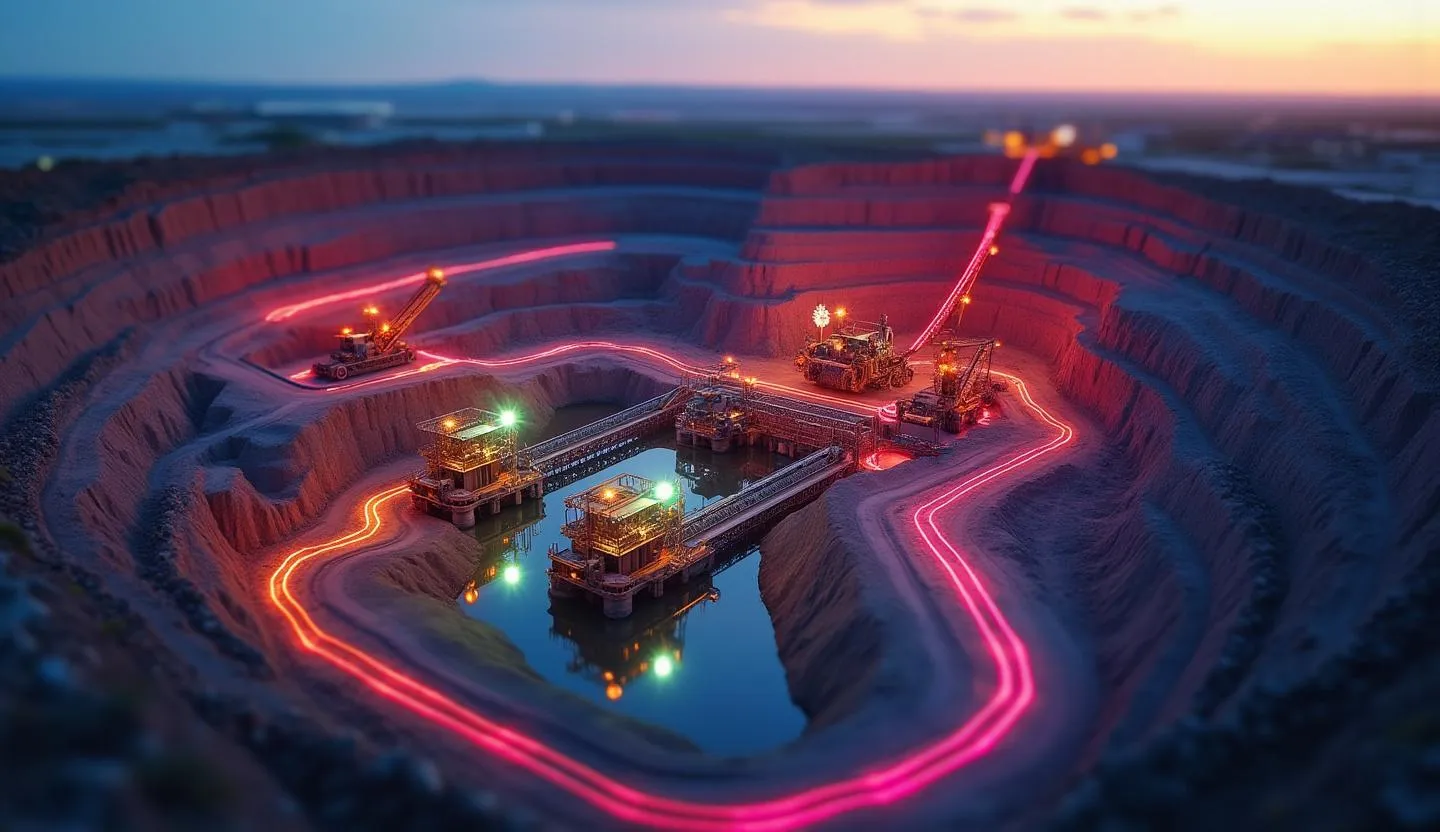Citi Cools on BHP: What the Downgrade Signals for Global Commodities Investors
BHP Group (BHP), the world’s largest diversified mining conglomerate, is at the center of global resource flows—from iron ore and copper to coal and nickel. Operating across Australia, South America, and North America, BHP’s business model is built on scale, efficiency, and exposure to long-term infrastructure and electrification trends. Yet, today’s rating downgrade from Citigroup, moving BHP from "Buy" to "Neutral," has put a spotlight on valuation risks and the sustainability of recent bullishness in mining equities. Analyst downgrades, particularly from influential global banks, often serve as early warning signals for institutional investors that consensus sentiment is shifting.
Key Takeaways
Citi downgrades BHP to Neutral: Signals concerns over valuation despite recent strong results.
Stock price has rallied: BHP is up nearly 35% from its spring lows, now trading at $53.74, near the upper end of its 12-month range.
Recent results show mixed signals: FY25 earnings and revenues declined year-over-year on weaker commodity prices, despite record production in iron ore and copper.
CEO commentary emphasizes long-term demand: BHP’s management highlights robust copper demand and ongoing acquisition appetite, but market sentiment may be peaking.
Technical indicators show overbought conditions: Recent RSI above 70 underscores potential for a pullback.
Downgrade comes amid sector rotation: Investors may be locking in gains as cyclical tailwinds moderate.
Citi’s Downgrade: Context, Weight, and Implications
Why Citi’s "Neutral" Matters
Citigroup is among the world’s most influential investment banks, with deep sector expertise in global mining and commodities. Its large institutional client base and research reach can move markets, especially in resource-heavy sectors. Citi’s analysts have a long track record of calling turning points in mining cycles. Their shift to "Neutral"—absent a price target—reflects a belief that the current rally may have run ahead of fundamentals. This view is especially impactful given recent bullishness and the bank's heavyweight status in mining finance.
Citi’s move signals caution after BHP’s strong run—its global influence means this downgrade is likely to reverberate through both institutional and retail portfolios.
Sector Dynamics: From Boom to Plateau?
BHP’s business is tightly bound to global economic momentum. As the world’s largest miner, its results are a bellwether for commodity cycles. The past year has seen a resurgence in demand for copper and iron ore, driven by infrastructure spending and the energy transition. Yet, as prices for key metals begin to plateau and cost inflation bites, the sector is seeing increased valuation scrutiny.
BHP’s Financial and Operational Backdrop
Recent Earnings: Strong Volumes, But Softer Pricing
FY25 results: Revenue and earnings declined year-over-year on lower realized prices for iron ore, even as the company delivered record output in iron ore and copper.
Profitability pressures: Weaker commodity prices and rising costs weighed on margins, underscoring the cyclical risks in mining.
Balance sheet resilience: BHP maintains strong free cash flow and a robust balance sheet, supporting its progressive dividend and buyback programs.
Technicals: Overbought Signals, Momentum at Risk
RSI: Recent RSI of 70.4 suggests overbought territory, increasing the likelihood of a near-term pullback.
VWAP and moving averages: Current price ($53.74) is above both 20-day EMA ($52.97) and SMA ($52.70), supporting the case for recent bullish momentum but also possible mean reversion.
Volume: Trading volumes have moderated compared to the spring surge, suggesting waning speculative interest.
Stock Performance: One-Year in Review
12-month range: Low of $39.73 (April) and high of $63.21 (October last year).
Current price near recent highs: BHP has rebounded sharply from its spring lows, outperforming many sector peers.
Sentiment ratio: Slightly skewed positive (52% up days), but not overwhelmingly so.
Recent News Flow: Mixed Signals for Bulls and Bears
CEO’s Strategic Outlook
In a recent CNBC interview, BHP CEO Mike Henry highlighted the company’s focus on scaling up copper production and leveraging global operations to mitigate tariff and trade headwinds. He noted:
“We see robust copper demand underpinning long-term growth, and BHP is positioned to benefit from electrification trends and infrastructure investment.”
Earnings Headlines
Zacks Investment Research flagged the decline in BHP’s FY25 earnings and revenues, attributing it to lower iron ore prices despite record production. The report emphasized ongoing profitability challenges even for best-in-class miners.
Contradictory Analyst Moves
Notably, Citi’s downgrade closely follows a period where other analysts remained bullish or neutral, underscoring just how stretched valuations may have become after a strong run-up. Proactive Investors reported that Citi’s rationale centers on valuation, not operational execution—suggesting the downgrade is more about price than fundamentals.
What Does the Downgrade Mean for Investors?
Valuation vs. Fundamentals: Have Expectations Overshot?
BHP’s business remains fundamentally strong, with world-leading output, scale, and cost discipline. However, with shares trading near recent highs and technical indicators flashing caution, Citi’s downgrade brings attention to the risk of buying into momentum too late in the cycle.
Potential Upside: With no new price target from Citi, and the stock trading at the upper end of its range, upside potential appears limited in the near term.
Downside Risk: Overbought technicals and softer commodity pricing elevate short-term downside risks, particularly if global growth expectations moderate.
Sector rotation: Investors may see better risk/reward in other cyclicals or in rotating to defensives as the mining cycle matures.
Analyst Confidence: Why Citi’s Call Carries Weight
Citi’s downgrade is especially notable given its global influence and history of prescient calls in the resources sector. Their shift to "Neutral"—even in the face of BHP’s operational strength—reflects deep skepticism about further upside at current levels. This is a call that sophisticated investors ignore at their peril.
DeepStreet Take: Watchful Waiting as the Mining Cycle Turns
BHP is not a company in decline—far from it. But when the world’s top mining analyst teams begin to question valuation, it’s a signal that momentum may be peaking. For investors, this is a time to reassess risk, consider taking profits, and scrutinize new capital allocation in mining. Those with a long-term view may still find BHP’s fundamentals compelling, especially if the stock corrects. But in the near term, the risk/reward has shifted decisively toward caution.
Bottom Line: Citi’s downgrade is a timely reminder that even the best-run miners are not immune to the gravity of valuations and cyclical headwinds. Stay nimble, watch for technical signals, and be prepared for increased volatility as the mining cycle matures.

.svg)
.svg)
.svg)
.svg)

.svg)

.svg)
















